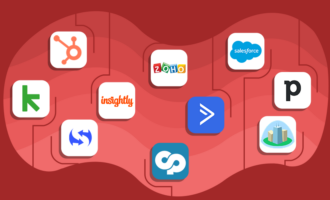The customer experience is crucial to winning and keeping customers. Many elements are required to create a memorable customer experience. One of the most important is excellent customer communication.
This communication can occur across multiple channels — social media, email, text messages, web pages, printed information, telephone, and in person.
Pro Tip
Upgrade your customer service with our AI phone answering system. Discover how it can streamline communication and improve efficiency!
Customer communication management (CCM) is how you leverage communication across all the available channels to deliver a consistently good overall customer experience.
Defining customer communication management
Global research firm Gartner defines customer communication management (CCM) as a “strategy to improve the creation, delivery, storage and retrieval of outbound communications.” A company’s customer communications span multiple departments and functions. The CCM strategy encompasses marketing, new product launches, correspondence, documentation, renewal notifications, and payment notifications.
Companies must manage customer communications across paper, mobile, and online outbound methods. This includes printed and digital documents, email, Short Message Service (SMS), social media, and web pages.
CCM solutions should align with strategic growth objectives to support the customer experience throughout the entire journey. This omnichannel focus involves the ongoing improvement of all outbound communications with all stakeholders, both internal and external, including employees, customers, prospects, vendors, distributors, partners, regulatory bodies, and the media.
Pro Tip
Collect and manage support tickets, feedback, and more with Jotform’s free customer service forms.
CCM software
Since so much of what companies do now involves technology, there are many options for customer communication management (CCM) software. The self-service platforms, apps, and other digital tools, like chatbots, help teams and business leaders more effectively manage their customer communications.
CCM software makes it easier to work across channels and formats, enhancing aspects of communication, such as personalization, customer engagement, customer retention, and real-time customer interactions, that are often the most challenging as a company scales.
Staying connected to customers
While digital options save time and money, technology cannot do it all. Automation and chatbots work well when a person is unavailable to assist, but overdependence on digital tools can lead to companies becoming disconnected from customers.
This is another reason why CCM is so critical as a formal organizational process. Adding the process early on in a company can help keep the team focused on personalization, engagement, and consistent interaction.
Other common customer communication errors
Besides becoming disconnected, companies risk making other customer communication mistakes by failing to employ a strong CCM framework:
- Companies often don’t acknowledge dissatisfied customers, choosing to remain silent instead.
- There are no communications focused on customer retention.
- No attempt is made to use existing data to create tailored messages, promotions, and offers.
- There is no A/B testing to optimize content for different audiences.
- The content either doesn’t incentivize customers to take action or encourages action when it’s unnecessary.
- Certain types of communications, like billing and payment, aren’t recognized as opportunities to add value by upselling, cross-selling, or providing additional information that helps the customer.
Pro Tip
Elevate your customer communication by integrating Jotform Gmail Agent into your workflow, allowing it to auto-draft personalized email responses based on past interactions, ensuring swift, consistent, and empathetic communication while you focus on delivering a seamless customer experience.
CCM best practices for lasting customer relationships
However, a customer communication management process that aligns with a structured content management strategy can resolve these errors, help establish new customer relationships, and strengthen existing customer relationships. Here are some best practices:
- Create a defined communication and content management strategy that addresses each platform and channel, focused on consistent messaging, personalization, and opportunities to make offers.
- Use software tools to create user-friendly, convenient forms that auto-fill customer information to minimize the actions customers have to take when interacting with you.
- Anticipate questions and provide answers, solutions, and direction through multiple avenues. This could include a help desk with support articles, a chatbot instant messaging service on your website, and a phone number for direct customer assistance.
- Get more personal with all of your communications. Look for opportunities to acknowledge a closer connection. For example, you can use a CCM solution to assess a customer’s bill, see where and when they shop, then include a relevant coupon to that store or on their bill. If you track data on individual customer behavior, you can find ways to help or provide valuable information related to their behavior in an e-newsletter or email campaign.
- Offer links to opt out or unsubscribe to let customers know they have that option. While you would prefer they continue receiving information, it’s important to provide them with a choice.
A better experience
Listening, responding, personalizing, and offering choices are the key ingredients for a successful customer communication management system. In turn, this will lead to better customer experiences for both new and established customers.


























































Send Comment:
1 Comments:
More than a year ago
Your blog got me to learn a lot, thanks for sharing, nice article. Happy to share with you we are also one of the school management software. Feel free to contact us. MyDschool